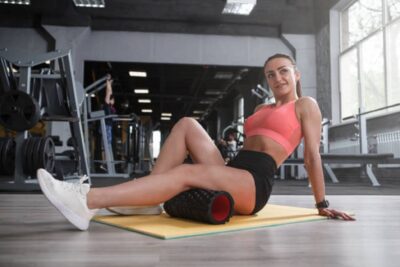Contact Us
Contact Us

We talked a lot about the core, how it is your pelvis, and the things that attach to it. So I wanted to go through and go over some of those muscles.
From a historical note in the 1640s, “to disable, render useless,” a figurative verbal extension from hamstring (n.) “tendon at the back of the knee.” Cutting this would render a person or animal lame. The literal sense of the verb is attested from 1670s. Source: Etymonline.com
Let us start with the most exciting muscle in the body, the hamstring or biceps femoris. The hamstring is the only muscle that attaches to 4 bones and operates two joints.
The four bones are the ischial tuberosities, but bones, the femur, as well as the tibia and fibula in the lower leg. The hamstring will also act on the hip and the knee. However, it is both an extensor and a flexor. It extends the hip and flexes the knee. It is the only muscle to do this. This is why keeping the hamstrings from getting tight is so essential.
There lies something fun about the hamstring “tightness.” If you bend over and your hamstrings are tight from mid-thigh down, you need to work on activating the hamstring and getting it looser. I would do the bend-over and touch-your-toes exercise. However, if it is tight where it attaches to the pelvis or right by your butt, you need to work on your iliopsoas or your hip flexors as they are too tight, which is rocking your pelvis forward.
The rocking forward of your pelvis is causing strain on your upper hamstring. This is most often, but only sometimes, caused by sitting. Sitting causes the iliopsoas contracture and thus changes how your pelvis will sit. That change moves the bones and puts pressure on the top of the hamstring. This is one of the most overlooked causes of hip, knee, and low back pain and damage.
Remember that the iliopsoas is a flexor, and the upper part of the hamstring, which attaches to the pelvis, is an extensor. And extensors rarely get too tight
from a tone perspective. So, in this case, you need to work your hip flexors to solve this issue.
Check out Chalmers Pillarsofwellness.com for Wellness updates! And ask me any questions you have at questions@chalmerswellness.com. I answer all of them and look forward to hearing from you.
The Chalmers Wellness Stubstack just launched. Comment, Like, Interact with other people on their wellness journey. Communities can make the difference. DrChalmers.substack.com

Dr. Matt Chalmers
Disclaimer: This content is for informational purposes only. Before taking any action based on this information you should first consult with your physician or health care provider. This information is not intended to be a substitute for professional medical advice, diagnosis, or treatment. Always seek the advice of your physician or other qualified health providers with any questions regarding a medical condition, your health, or wellness.
Post a Comment